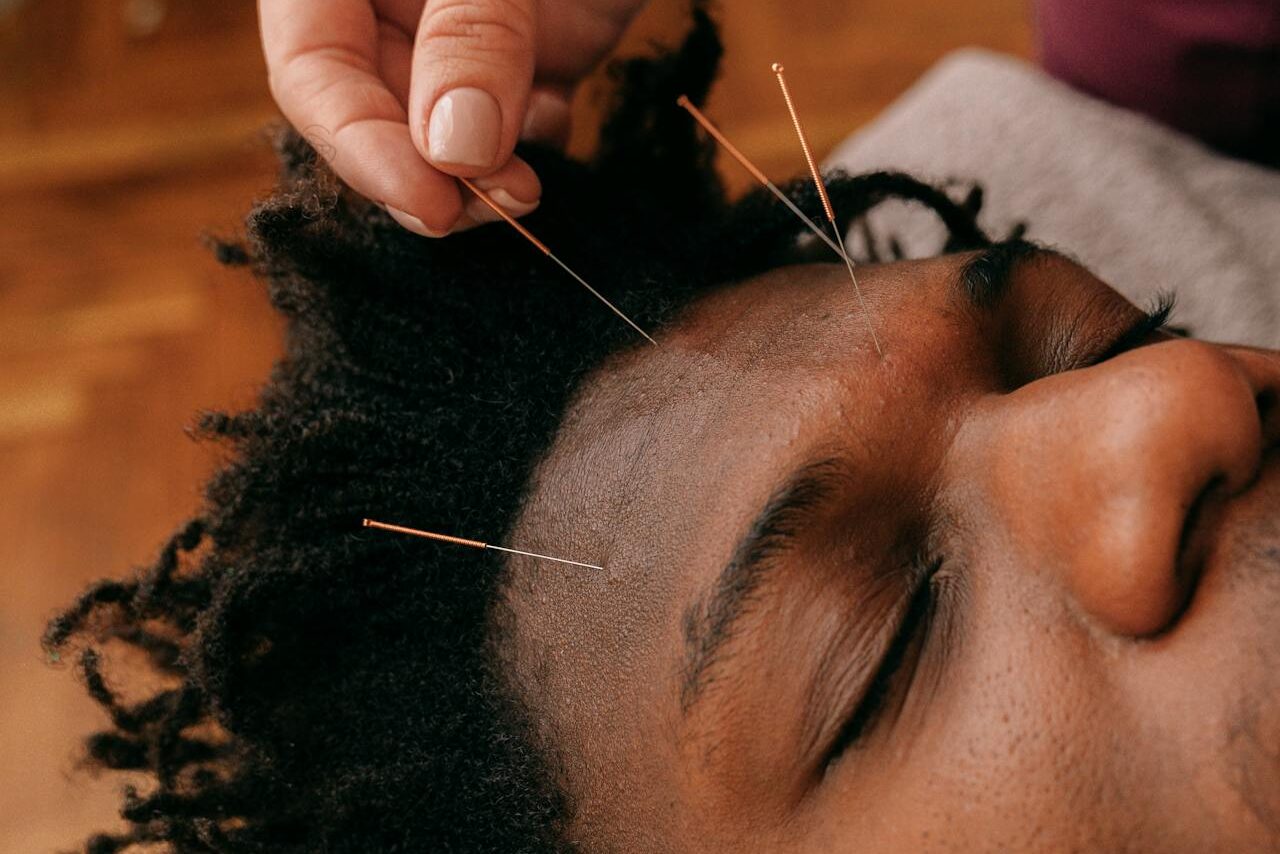1. Acupuncture: The Science of Healing with Needles

Acupuncture has been used in Traditional Chinese Medicine (TCM) for over 3,000 years, yet Western medicine only recently began recognizing its effectiveness. The practice involves inserting thin needles into specific points on the body to stimulate energy flow (Qi) and restore balance. While skeptics once dismissed it as pseudoscience, multiple studies now confirm that acupuncture can relieve pain, reduce inflammation, and improve circulation. One of the biggest scientific breakthroughs regarding acupuncture is its impact on chronic pain conditions, such as arthritis, migraines, and lower back pain.
According to AAFP, beyond pain management, acupuncture has been shown to help with stress, anxiety, digestive disorders, and even fertility issues. Researchers believe it works by stimulating the nervous system, prompting the release of endorphins and neurotransmitters that promote healing. With growing scientific support, many hospitals and medical practitioners now incorporate acupuncture into mainstream treatments, proving that this ancient practice has real modern-day benefits.
2. Meditation: The Ancient Art of Rewiring the Brain

Meditation has been practiced for thousands of years, primarily in Buddhist and Hindu traditions, as a way to cultivate inner peace and mindfulness. According to Forbes, science confirms that meditation isn’t just good for the soul—it literally rewires the brain and improves mental health. Modern studies using fMRI scans have shown that regular meditation can increase gray matter density in the brain, particularly in areas related to memory, emotional regulation, and stress control. Research from Harvard University found that meditation reduces the size of the amygdala, the brain’s fear center, leading to lower levels of anxiety and stress.
The benefits don’t stop there. Meditation has also been linked to lower blood pressure, improved focus, better sleep, and even enhanced immune function. With science backing what monks and sages have known for centuries, meditation is now a staple in mental health treatments, corporate wellness programs, and medical therapies worldwide.
3. Herbal Medicine: Nature’s Medicine Cabinet

Herbal medicine has been used by civilizations across the globe, from Ayurveda in India to Traditional Chinese Medicine (TCM), for thousands of years. While many modern treatments stem from synthetic chemicals, herbal remedies are still popular in many cultures due to their natural healing properties. According to Johns Hopkins Medicine, science is finally catching up and proving the effectiveness of these natural plant-based remedies. Take turmeric, for example. Known for its powerful anti-inflammatory properties, curcumin, the active compound in turmeric, has been shown in numerous studies to significantly reduce inflammation, treat arthritis, and even improve heart health.
Another example is ginger, which has been used for thousands of years to treat nausea and digestive issues. Studies show that ginger reduces nausea and vomiting, especially during pregnancy or chemotherapy. It also has anti-inflammatory properties that can help with muscle pain and soreness. Herbs like echinacea, garlic, and ginseng are also showing promising results in supporting immune function, reducing oxidative stress, and even fighting infections. These age-old remedies are backed by modern pharmacology, which has identified the active compounds in herbs that help the body heal. So, whether it’s a cup of chamomile tea to ease anxiety or a dose of elderberry to ward off the flu, herbal medicine is more than just folklore—it’s a scientifically validated way to support wellness.
4. Yoga: The Mind-Body Practice for Healing

Yoga has been practiced for over 5,000 years as a way to unite the body, mind, and spirit. Originating in ancient India, this practice incorporates physical postures, breathing exercises, and meditation techniques that promote flexibility, strength, and overall well-being. Modern science now recognizes yoga as an effective treatment for a wide range of physical and mental health conditions.
According to NCCIH, studies show that yoga can significantly reduce stress and anxiety by activating the parasympathetic nervous system, the body’s “rest and digest” mode. The practice of mindful breathing in yoga, known as pranayama, has also been shown to lower cortisol (the stress hormone), reduce blood pressure, and improve heart health. Physically, yoga is beneficial for flexibility, muscle strength, and balance. It’s also proven to aid in managing conditions like high blood pressure, diabetes, and asthma. In fact, many hospitals and health centers now incorporate yoga programs for rehabilitation and pain management, thanks to its healing benefits.
5. Aromatherapy: The Healing Power of Scents

Aromatherapy, or the use of essential oils for therapeutic purposes, has been practiced for thousands of years. Ancient Egyptians used aromatic oils in rituals, while the Greeks and Romans utilized them for healing and relaxation. Today, science has validated many of the healing benefits of aromatherapy. According to Heal Magazine, research shows that essential oils can help treat physical, emotional, and mental ailments by interacting with the body’s olfactory system, influencing the limbic system (the area of the brain that controls emotions). Take lavender oil—one of the most well-known essential oils. Lavender’s calming effects are so powerful that it’s commonly used in both mental health therapies and sleep treatments. In fact, several studies have shown that lavender can improve sleep quality and help alleviate insomnia.
Peppermint oil is another essential oil with science-backed benefits. Research suggests that inhaling or applying peppermint oil can relieve headaches, improve digestion, and even enhance cognitive function. Other oils, such as eucalyptus, have antimicrobial properties and are often used to clear sinus congestion and treat respiratory infections. With growing evidence, many healthcare providers are incorporating aromatherapy into treatment plans, particularly for stress reduction, pain relief, and sleep support.
6. Fasting: The Ancient Practice of Healing the Body

Fasting has been practiced for thousands of years in many cultures, both as a spiritual and physical health ritual. In fact, fasting is a central part of religious observances in Christianity, Islam, Judaism, and Buddhism. While the practice of fasting has been around for millennia, only recently has science begun to uncover its health benefits. According to BHMA research on intermittent fasting, where individuals cycle between periods of eating and fasting, it has revealed several incredible benefits. Studies show that fasting reduces inflammation, boosts brain function, and improves metabolic health. One study published in Cell Metabolism found that fasting can promote cellular repair, encourage autophagy (the process where cells clean out toxins and damaged components), and even improve insulin sensitivity, helping to reduce the risk of type 2 diabetes.
Fasting may also have a positive impact on longevity. Some animal studies suggest that fasting can increase lifespan, slow aging, and improve heart health. While more research is needed to confirm these effects in humans, the evidence suggests that fasting could be a powerful tool for disease prevention and overall health maintenance. For those seeking to incorporate fasting into their routine, it’s essential to consult a healthcare provider to ensure it’s done safely.
7. Chiropractic Care: Spinal Adjustments for Healing

Chiropractic care, which involves the manipulation of the spine and joints, has been practiced for over 100 years. While many early practitioners were met with skepticism, recent scientific studies have shown that chiropractic adjustments can relieve pain and promote overall spinal health. One of the most well-researched benefits of chiropractic care is its ability to treat lower back pain. A study published in CleveLand Clinic showed that patients who received chiropractic adjustments experienced significant pain relief and improved mobility compared to those who only received standard medical treatments. Chiropractic care has also been found to help with headaches, neck pain, and muscle strain.
Chiropractors believe that misalignments in the spine, or subluxations, can interfere with the nervous system and lead to a variety of health issues. Research has shown that spinal adjustments can help improve nerve function and reduce inflammation, resulting in better overall health. Chiropractors often incorporate other therapies, such as massage and exercise recommendations, to optimize spinal and joint health.
8. Tai Chi: The Ancient Movement for Healing

Tai Chi is a traditional Chinese martial art known for its slow, controlled movements that cultivate mind-body awareness and balance. Although often seen as a form of meditation in motion, Tai Chi has recently gained scientific support for its ability to improve physical health and mental well-being. Numerous studies have demonstrated the health benefits of Tai Chi, particularly for older adults. It also enhances heart health and helps with chronic conditions like arthritis and fibromyalgia.
Tai Chi has also been shown to improve mental health. Research suggests that practicing Tai Chi regularly can reduce symptoms of depression and anxiety. The slow, mindful movements promote relaxation, reduce stress, and enhance mental clarity, making Tai Chi a holistic practice for both the body and mind.
9. Sound Healing: The Ancient Use of Vibrations for Health

Sound healing, which uses vibrations and frequencies to heal the body and mind, has ancient roots in cultures such as Egyptian, Greek, and Indian traditions. While it was once viewed with skepticism, modern science is now beginning to acknowledge the therapeutic benefits of sound frequencies on human health. Research has shown that sound therapy can help reduce stress, improve mood, and enhance relaxation. Other studies suggest that sound healing techniques, like the use of singing bowls or gongs, can help reduce pain and promote emotional well-being.
Sound therapy works by creating vibrational frequencies that resonate with specific parts of the body, promoting healing and restoration. Certain frequencies are believed to align with the body’s energy centers or chakras, helping to restore balance and harmony within the body. This form of sound therapy is now used in many wellness centers, where it’s incorporated into meditation sessions or relaxation therapies to promote healing.


